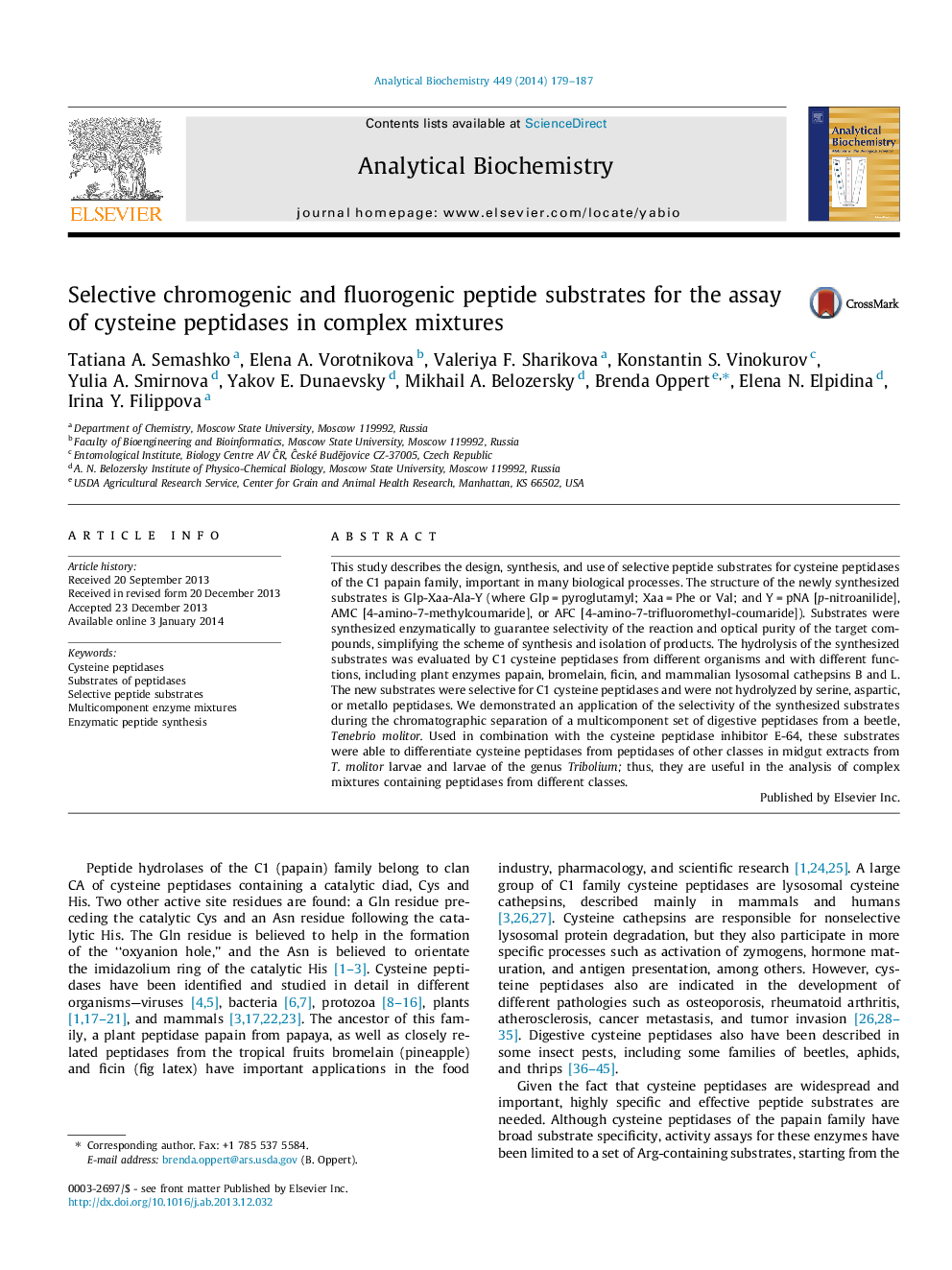| Article ID | Journal | Published Year | Pages | File Type |
|---|---|---|---|---|
| 1173419 | Analytical Biochemistry | 2014 | 9 Pages |
This study describes the design, synthesis, and use of selective peptide substrates for cysteine peptidases of the C1 papain family, important in many biological processes. The structure of the newly synthesized substrates is Glp-Xaa-Ala-Y (where Glp = pyroglutamyl; Xaa = Phe or Val; and Y = pNA [p-nitroanilide], AMC [4-amino-7-methylcoumaride], or AFC [4-amino-7-trifluoromethyl-coumaride]). Substrates were synthesized enzymatically to guarantee selectivity of the reaction and optical purity of the target compounds, simplifying the scheme of synthesis and isolation of products. The hydrolysis of the synthesized substrates was evaluated by C1 cysteine peptidases from different organisms and with different functions, including plant enzymes papain, bromelain, ficin, and mammalian lysosomal cathepsins B and L. The new substrates were selective for C1 cysteine peptidases and were not hydrolyzed by serine, aspartic, or metallo peptidases. We demonstrated an application of the selectivity of the synthesized substrates during the chromatographic separation of a multicomponent set of digestive peptidases from a beetle, Tenebrio molitor. Used in combination with the cysteine peptidase inhibitor E-64, these substrates were able to differentiate cysteine peptidases from peptidases of other classes in midgut extracts from T. molitor larvae and larvae of the genus Tribolium; thus, they are useful in the analysis of complex mixtures containing peptidases from different classes.
